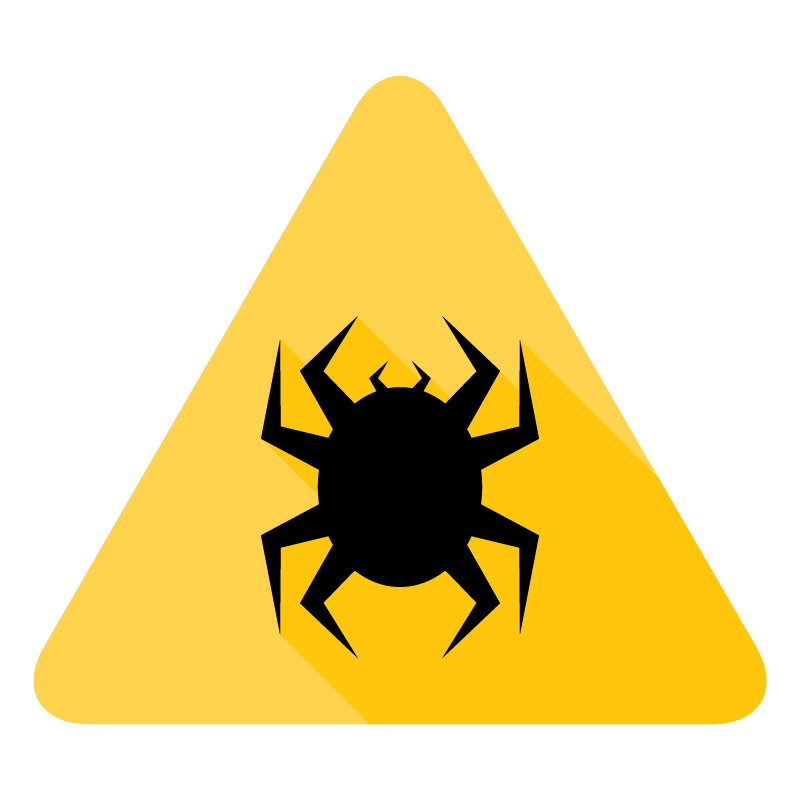The Most Common Types of Malware
Cyber Security | July 11, 2023

Malware, short for malicious software, poses a significant threat to individuals and organizations. While malware is used as a broad term encompassing various harmful programs designed to infiltrate systems and cause damage, understanding the most common types of malware is crucial for anyone operating in today’s digital landscape. As a leading cybersecurity provider, Next Hop Solutions understands the importance of cloud security for businesses. That is why we have compiled a list of the most common types of malware to help organizations stay informed and be prepared in the ever-evolving landscape of cyber threats.
Most Common Types of Malware
1. Viruses
Viruses are the most well-known type of malware. They are designed to replicate themselves by attaching to legitimate files or programs and spreading from one system to another. Viruses can cause significant damage by corrupting or deleting files, slowing computer performance, or rendering the system inoperable. They often spread through infected email attachments, downloads, or compromised websites.
2. Trojans
Trojan malware disguises itself as legitimate software or files to trick users into installing or executing them. Once inside a system, Trojans can perform various malicious activities, such as stealing sensitive information, hijacking system resources, or enabling remote access by attackers.
3. Ransomware
Ransomware has gained notoriety in recent years due to its disruptive and damaging nature. This type of malware encrypts a victim’s files or locks them out of their system, making them inaccessible until a ransom is paid to the attacker. Ransomware attacks can cause significant financial losses and operational disruptions for individuals and organizations. It spreads through malicious email attachments, exploit kits, or compromised websites.
4. Botnets
Botnets are networks of infected computers, known as bots or zombies, controlled by a single entity, usually a cybercriminal. Botnets are typically created by spreading malware like worms or Trojans to many devices. Once compromised, these devices can carry out coordinated attacks, such as distributed denial-of-service (DDoS) attacks, spam campaigns, or spreading further malware infections.
5. Spyware
Spyware is malware that secretly monitors a user’s activities, collects personal information, and sends it to a third party without the user’s consent. It can track keystrokes, capture screenshots, record browsing habits, and steal login credentials or financial data. Spyware often comes bundled with seemingly harmless software downloads or disguises itself as browser extensions or plugins.
If you want to learn more about the most common types of malware, contact the knowledgeable professionals at Next Hop Solutions. You can reach us by calling 1-855-482-5141 or using our online contact form. Our team members are highly skilled in their respective fields and will gladly address any inquiries you may have about our services.

Malware, short for malicious software, poses a significant threat to individuals and organizations. While malware is used as a broad term encompassing various harmful programs designed to infiltrate systems and cause damage, understanding the most common types of malware is crucial for anyone operating in today’s digital landscape. As a leading cybersecurity provider, Next Hop Solutions understands the importance of cloud security for businesses. That is why we have compiled a list of the most common types of malware to help organizations stay informed and be prepared in the ever-evolving landscape of cyber threats.
Most Common Types of Malware
1. Viruses
Viruses are the most well-known type of malware. They are designed to replicate themselves by attaching to legitimate files or programs and spreading from one system to another. Viruses can cause significant damage by corrupting or deleting files, slowing computer performance, or rendering the system inoperable. They often spread through infected email attachments, downloads, or compromised websites.
2. Trojans
Trojan malware disguises itself as legitimate software or files to trick users into installing or executing them. Once inside a system, Trojans can perform various malicious activities, such as stealing sensitive information, hijacking system resources, or enabling remote access by attackers.
3. Ransomware
Ransomware has gained notoriety in recent years due to its disruptive and damaging nature. This type of malware encrypts a victim’s files or locks them out of their system, making them inaccessible until a ransom is paid to the attacker. Ransomware attacks can cause significant financial losses and operational disruptions for individuals and organizations. It spreads through malicious email attachments, exploit kits, or compromised websites.
4. Botnets
Botnets are networks of infected computers, known as bots or zombies, controlled by a single entity, usually a cybercriminal. Botnets are typically created by spreading malware like worms or Trojans to many devices. Once compromised, these devices can carry out coordinated attacks, such as distributed denial-of-service (DDoS) attacks, spam campaigns, or spreading further malware infections.
5. Spyware
Spyware is malware that secretly monitors a user’s activities, collects personal information, and sends it to a third party without the user’s consent. It can track keystrokes, capture screenshots, record browsing habits, and steal login credentials or financial data. Spyware often comes bundled with seemingly harmless software downloads or disguises itself as browser extensions or plugins.
If you want to learn more about the most common types of malware, contact the knowledgeable professionals at Next Hop Solutions. You can reach us by calling 1-855-482-5141 or using our online contact form. Our team members are highly skilled in their respective fields and will gladly address any inquiries you may have about our services.





